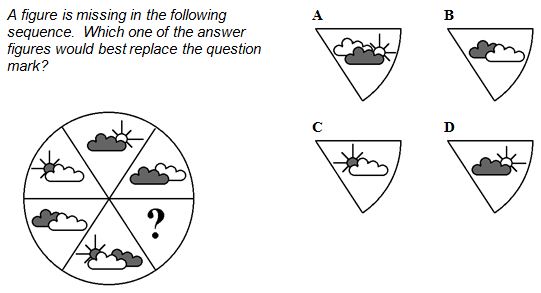10. Exam Strategy
As the exam is time dependent you need a process to answering a question quickly.
Here's how I would split up my time:
-
Calculate the amount of time you are allowed to spend per question.
- Total time in minutes / number of questions
- E.g. 60 minutes / 120 = 0.5 minutes per question or 30 seconds.
-
Spend the following time on the question:
- Reading – 1/3 or 10 seconds if 30 second time per question.
- Workings – ½ or 15 seconds if 30 second time per question.
- Solution – 1/6 5 seconds if 30 second time per question.
Why do you need to spend a lot of time reading and doing the workings?
- Understand the question properly
- Make sure your logical structure is flowing so that you're getting the correct answer.
Here are some pitfalls that students make that often lead them to not getting the answer correct or not passing:
- Not understanding the question
- Making minor mistakes from misreading the question
- Not choosing an answer
- Not working out your answer – especially if you have to come back to the question.
- Spending too much time on one question – most common.
To avoid spending too much time on one question:
-
If you cannot find a pattern straight away, find another element and see if there is a detectable pattern.
- Remember to go through to find the most easily detectable pattern if it exists, look at:
- Shape transformations
- Direction and positioning
- Colours
- Size
- Angle transformations
- Failing that, then look at more 'advanced' patterns through
- Superimposing
- Number patterns
Use that to identify the correct answer as the answer will most likely have that element there.
Remember there are such things as dummy images .
These are images that are there to trick you. While surrounding images may move to a consistent pattern, a dummy images or variable stays constant and does not move with that pattern or moves with a different pattern altogether.
Last thing to remember is if your exam does not penalize you for choosing an incorrect answer (i.e. you don't lose marks if you choose a wrong answer), then you should answer all the questions , even if it means guessing.
How do you approach this?
After you have finished answering all the questions that you can and you have only 20-30 seconds spare, just choose multiple choice answer "c" for those questions left outstanding. Why?
- Research has shown that that is the most population solution option that appears in the exam.
- If you randomly choose multiple choice options e.g. A, B, D, etc… you've lowering your chances of getting the correct answer because you're increasing the pool. By keeping one solution option e.g. "C" you're making the only differing variable the actual solution.
Now, let's go through some sample questions to put exam strategy together.
Example 1

Example 2

Key Rules to remember:
- Your goal is to get through the question quickly and done correctly.
-
If you cannot find a pattern straight away, find another element and see if there is a detectable pattern.
- Remember to go through to find the most easily detectable pattern if it exists, look at:
- Shape transformations
- Direction and positioning
- Colours
- Size
- Angle transformations
- Failing that, then look at more 'advanced' patterns through
- Superimposing
- Number patterns
Use that to identify the correct answer as the answer will most likely have that element there.
Now it's time to do your assignment.
- Download the assignment question here.
- Print it out or if you want to do it electronically, save it.
- Complete the questions to it.
- Then check the solutions on the video below.
- For the answers in text instead of video, download them here.